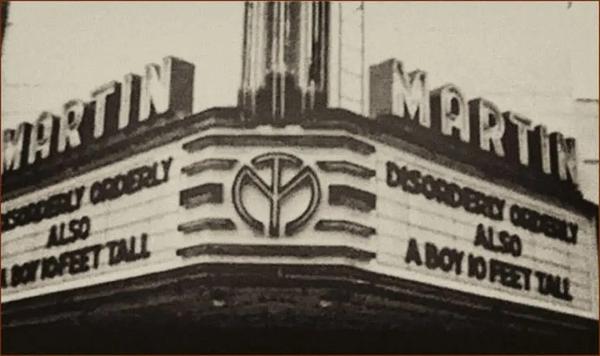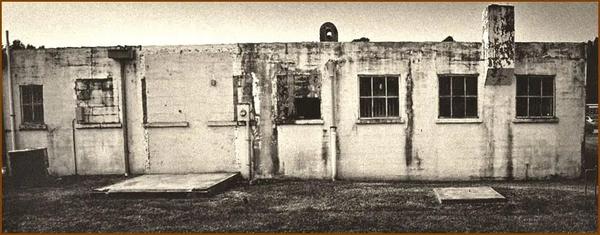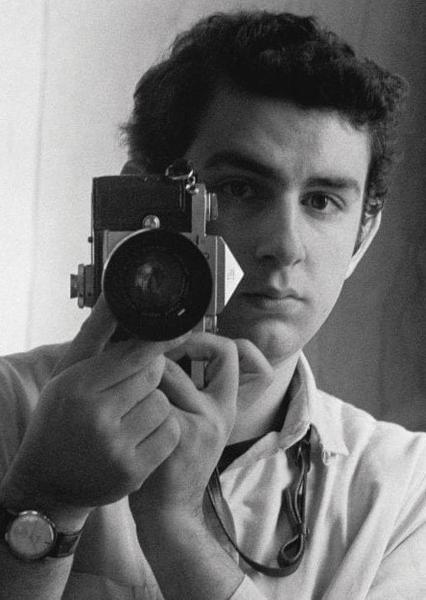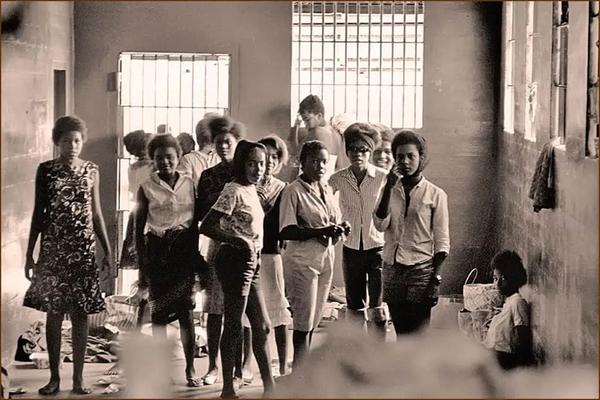June 2025 Hello , It's a real fear for Latino parents in America today, having a child snatched up on the street and not being able to find her. To know we have a history of authorities taking children and holding them
incommunicado without due process makes this even more terrifying. To know that we moved past this kind of injustice and yet, did not learn from our history causes my chest to ache with an actual physical pain. Which is nothing compared to the suffering of brown and black people in the
country. I know it will take more than protests in the streets to stop this greed and lust for power, but for the moment, all I have is one more story of brave girls keeping the flame of freedom alive and a photographer risking his life to save them. In the sweltering heat of a Georgia midsummer, 1963, 13-year-old Shirley Green-Reese decided to attend her first civil rights demonstration. She went to the protest without telling her parents, thinking she'd be back before they knew she was gone. She didn't return for nearly two months. "Nobody knew where we were. We didn't even know where we were," said Carol Barner-Seay, a 12-year-old arrested with
Shirley.
James Westbrook organized the demonstration to desegregate the Martin Theater in Americus, Georgia. The 19-year-old, a field secretary for the Student Nonviolent Coordinating Committee
(SNCC), and his little sister, 12-year-old Lulu Westbrook lined up with about 40 black youths to buy a ticket, not at the black entrance around behind the theater, but at the front ticket window for whites.
"We were gung-ho young people who want to change the system,"said Lulu.
Martin Theater, Americus, Georgia, circa 1960s, courtesy
WednesdaysWomen.com. According to Radio Diaries, police showed up and when the young people refused to disperse, attacked them with clubs and dogs. "Some of us were taken by our feet and arms and thrown in a paddy wagon, and I was one of them," said Lulu Westbrook. Authorities wanted to limit press coverage of civil rights demonstrations and deter protestors and chose the deliberate strategy of not taking the prisoners to the local city jail, but secretly moving them around and
denying their rights to habeas corpus.
James wasn't arrested."I told Mom that night: 'They drove her off in a paddy wagon and I have no idea where they went. Americus is a small town where everybody knew everybody. It was a network of parents trying to find out, day by day,
where their children were."
At least fifteen girls aged 12 to 15 were hauled to a neighboring town jail in an enclosed back of a truck. Days later they
were taken to a civil war-era building known as the Leesburg stockade and imprisoned in one room.
Stockade where girls were imprisoned, Leesburg, Georgia, circa 1960s One
young girl, Henrietta Fuller, described the dreadful conditions. “There were no beds, no mattresses, no blankets, pillows, no sheets. The floor was cold…The water was hot and it was running all the while. The man gave us three cups for the 32 of us.” Off and on other girls came and went from
stockade prison, which accounted for a total of more than 30. The original 15 remained and feared they would never be freed. Confined in one room with no electricity and bars on the broken windows, the girls lived in the clothes on their backs. The one toilet was out of order, so they used the shower, which also provided their only drinking water. It was only a trickle, Twice a day, the girls got egg sandwiches
or under-done hamburgers. They used the wrappings for toilet paper. “It wasn’t fit for dogs. As a matter of fact, it wasn’t fit for snakes,” Carol Barner Seay says, remembering the fear and revulsion the day a rattlesnake was thrown into the room
with them. “We were screaming and crying. “Everyday we were told we would be taken out one by one and killed.” "Being in a place like that, I didn't feel like we was human," said Shirley Green-Reese, now 70, said. "I had never been away from home, felt] as if no one cared, and I gave up hope many days...We started praying together. And then we would pray individually, and cry individually. One of the girls seemed worse off than the rest. “I was scared Verna was going to die," said Diane Dorsey-Bowens who was thirteen. "If she ate at all, it would just come right back up.” Throughout July and August, families heard nothing of the missing girls. Members of the SNCC searched jails in the surrounding area. As fears mounted, a rumor circulated about girls held in the Leesburg Stockade. Among blacks Leesburg was known as
Lynchburg. The SNCC sent 21-year-old Danny Lyon, who roomed with John Lewis in Atlanta, to follow up on the rumors.
SNCC photographer Danny Lyon.
A 15-year-old boy who barely knew how to drive, offered to help. The photographer hid
in the back seat as they approached the stockade. When the boy hopped out to distract the one man guarding the girls, Danny Lyn sneaked around the back of the building and discovered the girls. Introducing himself, he gave the girls a peace sign and said one word: freedom.
Carol Barner Seay said later, “If you was living segregation, born in segregation, slept segregation, ate segregated, went to church segregated, freedom meant everything to you.
“You wouldn’t have a reason to use that word if you was (white). But if you was my color, it meant a lot. OK? That was a symbol to us, that he was there to do us no harm.”
“Here I was," remembers Danny, "a young, Jewish guy with curly
hair, and they took to me right away, reaching through the bars to touch my hand.”
The girls were secretly trucked 30 miles away and locked in a stockade building that lacked the most
basic hygiene facilities. (Photo: Danny Lyon, 1963) "Had he been caught, at that time," Carol said of
the photographer, "he would have been a dead soldier...." “I just wanted to get the hell out of there once I got the
pictures," he said. The SNCC published Danny Lyon's photos, (you can see more here) as did the influential Black newspaper The Chicago Defender. New Jersey Senator Harrison A. Williams who entered the images into the Congressional Record and Georgia authorities came under increased pressure. Georgia authorities released the girls to their families in mid-September, but the news was overshadowed by the Ku Klux Klan bombing of the 16th Street Baptist Church, killing four little
girls. The girls held for nearly two months in the Leesburg stockade were never charged with any crime, though some of their families were charged $2 per day by
the local government for their daughters upkeep in prison. “They were not looking at us as children," said Emmarene
Kaigler-Streeter. All they were looking at was the fact that we were Black.” Seems the current Republican administration in Washington, D.C. suffers the
same blindness.
Like my article today? Forward this email to share with family and friends.
Sources https://www.npr.org/2019/01/18/685844413/i-gave-up-hope-as-girls-they-were-jailed-in-squalor-for-protesting-segregation
"Inside the Northwest Detention Center, we were not allowed to speak with or see most individuals detained here," said Rep. Maxine Dexter. "that should concern every one of us. What are they
hiding?” Rep. Pramila Jayapal said their visit followed a recent increase in U.S. Immigration and Customs Enforcement raids allegedly targeting labor organizers, as well as longstanding reports of poor medical and sanitary conditions at the privately operated facility. “One woman has been in this country for 20 years and was detained less than a week before she was to be married to a U.S. citizen. Another man has been here 31 years as a legal permanent resident, is a proud member of the Machinists Union, and is married to a U.S. citizen with three U.S. citizen children." The US Department of Homeland Security is now requiring lawmakers to provide 72 hours of notice before visiting detention centers. Here's a round-up from the Guardian on recent instances of public servants being arrested while trying to conduct oversight of ICE facilities.
Follow me on social media
This newsletter is a reader-supported publication. To support my work, consider becoming a paid subscriber.
Read
a great book? Have a burning question? Let me know. If you know someone who might enjoy my newsletter or books, please forward this e-mail. I will never spam you or sell your email address, you can unsubscribe anytime at the link below. To find out more about my books, how I help students, teachers, librarians and writers visit my website at www.MaryCronkFarrell.com. Contact me at MaryCronkFarrell@gmail.com. Click here to subscribe to this newsletter. |
|
|






